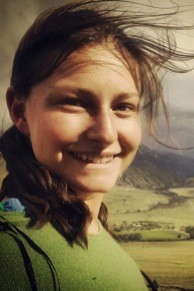
Hi this is BJ Bender, proud junior and Rangeland Ecology and Watershed Management Student at the University of Wyoming. This past summer I worked at Ishawooa Mesa Ranch on the South Fork in Cody, WY. I heard about this job my freshman year through the College of Agriculture and Natural Resources when the managers sent an email to UW looking for prospective employees (something that happens quite often in the UW College of Ag). I sent my application, resume, cover letter and a picture of me and my quarter horse mare, ‘Ruby’ to the managers, then interviewed over the phone and I was in!
This past summer was my second season working on this ranch it has taught me more than any other life experience, and now holds so much value for me. I did not think I would learn as much this summer already having worked the previous summer season, I was wrong. The most important thing I learned working at ‘Mesa’ is that the land has an infinite amount of lessons to teach.
This year was so entirely different than the last. For example, the amount of precipitation was much greater this year-giving me the opportunity to experiment with different grazing techniques all over the ranch. I was entrusted with the on-ranch rotational razing program this summer, in which I used temporary, solar-powered electric fencing to move 56 replacement heifers, 8 breeding cows, 10 yearling steers/heifers, and 8 finishing steers around the 150 acre ranch for 3 months.
As a range student, my classes that I had taken at UW came very much in handy while I was grazing these cattle. The managers wanted me to keep an inventory of the different species, how they were distributed and how they withstood the grazing pressure of these cattle. I learned so much keeping a journal of grass types, heights and densities, drawing out new species that I found and looking them up when they were new to me. It was so fulfilling to put my knowledge to work; choosing areas to graze these cattle, estimating the ability of each plot to withstand grazing pressure and then watching my daily experiment run its course. There is something about getting out in the field and putting what you learn in books and lectures to work in a real-life situation, where it actually matters. I will never forget all I have learned working at Ishawooa Mesa Ranch, and I couldn’t have done any of it without a little (or a lot) of help from the UW College of Ag and Natural Resources.
